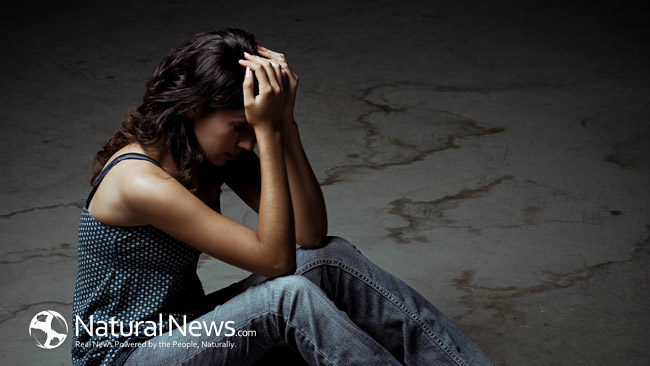Currently it is October and although the changing colors in the leaves are a beautiful site to behold; one thing is for certain – people are dreading Winter.
Many people become increasingly depressed and melancholy throughout this difficult time of the season. In fact some individuals suffer from something called Seasonal Affective Disorder (SAD).
This type of depression carries with it a heavy burden of symptoms such as; weight gain do to over-eating, trouble socializing, loss of focus and a stronger desire to sleep more.
Although SAD affects just 500,000 people in the U.S. each year, for those who struggle with seasonal depression means a major change in mood and behavior.
The cause of seasonal affective disorder is believed to be do to an imbalance in the brain’s biochemical process as a result of not getting enough sunlight during the winter months.
Another factor that contributes to this kind of depression is the hormone melatonin. The body’s production of melatonin escalates in the dark. Naturally, as the hours of sunlight are shortened the production of melatonin goes into full gear.
What Can You Do About SAD?
There are several strategies to treating SAD using a mostly holistic approach. Sometimes several, combined methods are used while other times one method may alone be just the thing you need.
1. Using Light Therapy
Phototherapy is a process that uses light to change brain wave activity and stimulate a more positive mood.
This is typically done with the use of a light therapy box which emits a powerful glow that is similar to natural sunlight. These devices come in many shapes and sizes, but the important thing to look for is a light box that is designed to filter out harmful UV rays.
Therapy with this type of device typically involves sitting within close proximity of the SAD light so that the light may enter in through the eyes and be transmitted to the brain.
It’s also important to note that you shouldn’t actually look directly at the source.
Using a device like this can be too stimulating and make it difficult to go to sleep, which is why many people opt for morning sessions of typically 30 minutes.
Although SAD therapy lights are not government regulated nor are approved by the FDA, they are recognized by many medical professions as a viable
method for treatment of seasonal affective disorder.
2. Taking Antidepressant Medication
Antidepressants are formally known as SSRI’s (Selective Serotonin Reuptake Inhibitors). Serotonin is an important neurotransmitter that is found in animals and is produced by tryptophan. Between 80 – 90% of this chemical is located in the gastrointestinal tract of the human body and it’s primary functions relate to mood, appetite, sex drive and social behavior.
If a person’s production of serotonin is too low it can cause a depressive state in the individual. This is where antidepressants come into play. SSRI’s are
designed to increase serotonin production and restore it to a healthier level.
If you aren’t already taking an antidepressant and are experiencing a difficult time with depression, you may consider talking to your doctor about how you are feeling and seeing if having an antidepressant prescribed is the way to go.
3. Becoming More Active
It can be difficult to get the exercise you need when there’s a lot of snow on the ground and it’s so cold that the outside is far from inviting. However, if
you can manage to get even a little fitness routine going then it can really aid in fighting off depression.
Things that you might want to look into are the possibilities of taking a Yoga class, Zumba, dance or even a Tai Chi class. Anything that puts the body into motion can release helpful hormones that boost mood.
When you exercise, endorphins are released from the pituitary gland and the central nervous system. These endogenous opioid inhibitory neuropeptides
are made to reduce the feeling of pain while creating a positive feeling throughout the body.
Although exercising can be hard work, typically afterwards you feel incredible and this can be attributed to the release of endorphins.
4. Being Mindful Of Your Diet
Two major culprits of seasonal depression include caffeine and alcohol. Alcoholic beverages are in themselves a depressant and a stimulant. This is a bad combination for those who have depression. A little caffeine is fine, but try not to overdo it and make sure to restrict your intake of coffee and tea to before 4 PM.
Certain foods can actually balance mood and are rich in vitamins, minerals, amino acids and essential fatty acids. The most important foods to incorporate into your diet include fish, nuts, fruits, vegetables, low fat cheeses and turkey.





